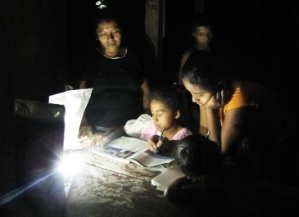Conservation begins and ends with education. Given the right tools to protect their environment, the next generation can give our world a cleaner, more sustainable future.
The importance of educating people, particularly children, has not gone overlooked by Paso Pacifico as we w ork to conserve natural resources and native wildlife species. In the past few weeks, Paso Pacifico launched its newest conservation and environmental education project. With generous support from the US Wildlife Service and the Private Reserve Network, we are taking steps to protect Neotropical Migratory Birds (NMB) and key habitats across private reserves located in the Paso del Istmo Corridor, Rivas Isthmus, Nicaragua. The area provides refuge to at least thirty-six NMB species of Conservation Concern and is an important land bridge for migrating swallows and raptors.
ork to conserve natural resources and native wildlife species. In the past few weeks, Paso Pacifico launched its newest conservation and environmental education project. With generous support from the US Wildlife Service and the Private Reserve Network, we are taking steps to protect Neotropical Migratory Birds (NMB) and key habitats across private reserves located in the Paso del Istmo Corridor, Rivas Isthmus, Nicaragua. The area provides refuge to at least thirty-six NMB species of Conservation Concern and is an important land bridge for migrating swallows and raptors.
Paso Pacifico’s Nicaraguan Bird Coordinator and ornithologist Juana Isabel Matamoros has been hard at work providing training to over fifteen high school teachers who work at schools throughout the Paso del Istmo. U.S.-based ornithologist and science educato r, Lynn Crew, recently joined Juana Isabelle to facilitate the new program. Together they are training teachers to educate their students about Neotropical Migratory Birds, partly in preparation for International Migratory Bird Day (IMBD) and also in preparation for a long-term education program about native and migrating birds.
r, Lynn Crew, recently joined Juana Isabelle to facilitate the new program. Together they are training teachers to educate their students about Neotropical Migratory Birds, partly in preparation for International Migratory Bird Day (IMBD) and also in preparation for a long-term education program about native and migrating birds.
Paso Pacifico looks forward to the IMBD Celebration that will involve several local communities throughout the Paso del Istmo. It promises to be an exciting day both for Nicaraguan communities and for conservation on a large scale.

